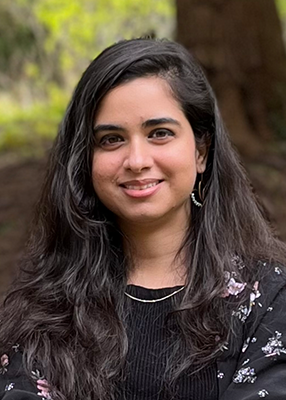Methods in ethnography have generally shifted and these kinds of techniques make ethnographies more feasible for people in disparate places or with other barriers to access; more and more people are comfortable with their ‘digital selves’ and navigating online spaces.
– Mahashewta Bhattacharya
The isolation incumbent during the Covid-19 pandemic interrupted classroom learning and demanded unusual collective responses, thereby also calling for new forms of anthropological inquiry. Responding to these challenges, Mahashewta Bhattacharya—a Ph.D. student in the Department of Anthropology at UBC—explored Google Hangout/Meets and Zoom classrooms through a digital ethnography, animated by her fellow classmates in an Indian public university. Bhattacharya’s work is both an analysis of, and a response to, the conditions that the global pandemic inflicted in university settings. This work lends broader insights to ethnographic themes of inequality, connection/disconnection, comfort, and uncertainty, and uses visuality as a critical entry point to understanding pedagogical innovations. In her research, Bhattacharya examines the sudden pressure to curate ‘digital selves’ made visible over video in educational settings, a phenomenon unique to learning amid the pandemic. While online classrooms provided a common virtual space, this transition also accentuated a ‘digital divide’ across the student body, and across global locations, highlighting disparate access to devices, wifi, and learning environments. The exposure of backgrounds—which commonly consisted of family homes, outdoor settings, private spaces, or a lack thereof—also signaled students’ socio-economic standing, eliciting feelings of anxiety, vulnerability, and shame. Increasingly, cultural phenomena manifest in digital spaces elide explanations for other socialites, necessitating new forms of anthropological theorizing, which digital methods—as Bhattacharya’s work demonstrates—may be adept to address. Shared digital spaces also serve to eliminate the glorified but problematic sense of distance in ethnographic accounts, subvert the traditional notion of a ‘fieldsite’ that risks fixing places in time and space, and bypass the demands of travel assumed in lots of anthropological work. This presents new forms of accommodation and recognition that rise to the critical call within the discipline to rethink the fieldsite, and demands of fieldwork. The unconventional ‘field’ that grounds Bhattacharya’s insights embraces the notion that ethnographies themselves bring the ‘field’ into being. The digital medium is integral to Bhattacharya’s work, revealing the inseparability of methods and research questions, and the active influence of methods in generating thinking, intentionality, and analysis.
For further reading, please see the article written by Mahashewta Bhattacharya on her research about the visual background in online classrooms.
Discussion question
Exploring the Interplay: Inseparable Bonds Between Methods and Research Questions in Ethnography
What is the significance of the inseparability of methods and research questions? How does this concept provide insights into ethnographic methods in general? In what ways, specifically, do Mahashewta’s research methods intertwine with the specific questions she investigated?
